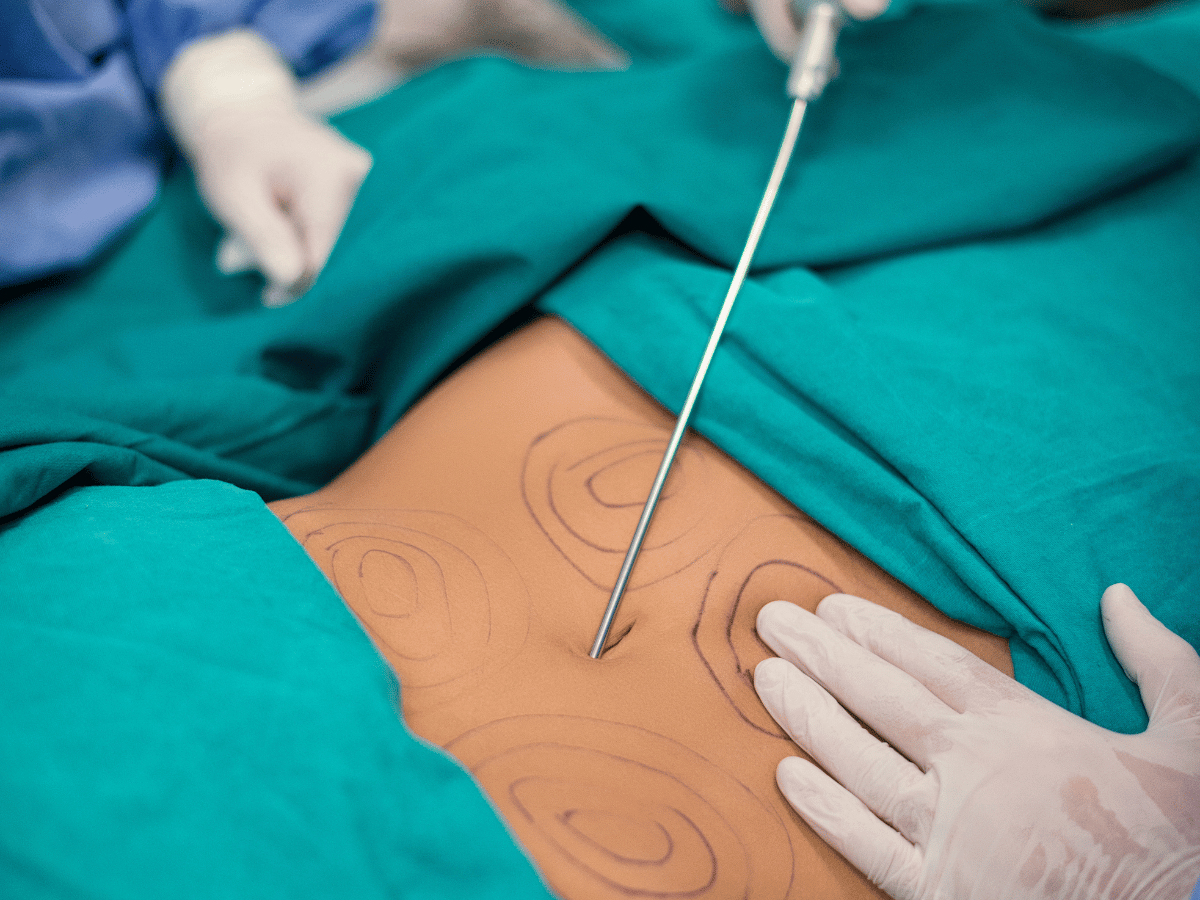Does Fat Grow Back After Liposuction? Understanding Permanent Results & Maintenance
May-30-2025

Liposuction is one of the most popular cosmetic procedures for good reason: it offers a powerful solution for stubborn fat deposits that resist diet and exercise. For many considering this transformative surgery, a key question arises: Does fat grow back after liposuction?
The straightforward answer is: No, the fat cells removed during liposuction do not grow back. This is because liposuction permanently removes fat cells from the treated areas. Unlike other cells in your body, the number of fat cells (adipocytes) you have generally becomes fixed in adulthood.
The Science Behind Permanent Fat Removal
Here's how it works:
- Fixed Number of Fat Cells: As adults, our bodies typically maintain a relatively stable number of fat cells. When we gain or lose weight, these existing fat cells either expand (when gaining weight) or shrink (when losing weight) – they don't significantly multiply or decrease in number.
- Targeted Removal: During liposuction, a surgeon uses a small cannula (a thin tube) to physically suction out and remove fat cells from specific areas. This process directly reduces the total number of fat cells in the treated region.
- Permanent Reduction: Once these fat cells are removed, they are gone for good. Your body does not create new fat cells to replace them in the treated areas. This is why the results of liposuction are considered permanent.
So, Why Do Some People Still See "Fat" Return?
While the removed fat cells are gone permanently, it's crucial to understand why some individuals might experience a change in their body contour over time, leading to a perception that fat has "grown back."
- Weight Gain in Untreated Areas: Liposuction removes fat from specific, targeted areas. If you gain a significant amount of weight after the procedure, the remaining fat cells in untreated areas of your body can still expand. This can lead to disproportionate fat distribution and a less contoured appearance overall.
- Expansion of Remaining Fat Cells in Treated Areas: While the number of fat cells is reduced in the treated area, some fat cells will always remain. If you gain a substantial amount of weight, these remaining fat cells can still expand. However, because the total number of cells is significantly lower, the treated area will generally still be proportionally smaller than if you had never had liposuction.
- Visceral Fat: Liposuction targets subcutaneous fat (the fat just under the skin). It does not remove visceral fat, which is the fat that surrounds your organs deep within your abdomen. A poor diet and lack of exercise can increase visceral fat, contributing to a larger waistline even after liposuction.
- Aging and Lifestyle: Natural aging processes, hormonal changes, and lifestyle factors (diet, exercise habits) continue to influence your body's shape and fat distribution over time, regardless of liposuction.
Maintaining Your Liposuction Results
The key to enjoying your liposuction results for years to come lies in lifestyle maintenance:
- Healthy Diet: A balanced diet rich in whole foods and mindful portion control is essential.
- Regular Exercise: Consistent physical activity helps maintain a healthy weight and keeps your body toned.
- Hydration: Drinking plenty of water supports overall metabolic health.
- Realistic Expectations: Understand that liposuction is a body contouring procedure, not a weight-loss solution. It works best for individuals close to their ideal weight with localized fat pockets.
By combining the permanent fat cell reduction achieved through liposuction with a commitment to a healthy lifestyle, you can effectively maintain your beautifully sculpted contours and enjoy long-lasting, satisfying results.
FAQs about Liposuction and Fat Regrowth
Q1: Does fat grow back after liposuction? A1: No, the fat cells physically removed during liposuction are permanently gone and do not grow back. The number of fat cells in treated areas is significantly reduced.
Q2: How does liposuction remove fat permanently? A2: Liposuction works by physically extracting fat cells from targeted areas. Once removed, these fat cells are gone from the body, leading to a permanent reduction in their number in that specific area.
Q3: Can I gain weight in treated areas after liposuction? A3: Yes, if you gain a significant amount of weight after liposuction, the remaining fat cells in the treated areas can still expand. However, because there are fewer cells, the treated area will generally remain proportionally smaller than it would have been without liposuction.
Q4: Where does fat go if it's not removed by liposuction? A4: If you gain weight after liposuction, the fat will accumulate in areas that were not treated or in visceral fat (fat around organs), where fat cells still exist in their original numbers.
Q5: Is liposuction a weight loss solution? A5: No, liposuction is a body contouring procedure, not a primary weight loss solution. It's best for individuals near their ideal weight who have localized pockets of stubborn fat.
Q6: How important is lifestyle for maintaining liposuction results? A6: Maintaining a healthy lifestyle with balanced diet and regular exercise is crucial. It prevents the expansion of remaining fat cells and the accumulation of new fat in untreated areas.
Q7: What type of fat does liposuction remove? A7: Liposuction primarily removes subcutaneous fat, which is the fat located just beneath the skin. It does not remove visceral fat (internal organ fat).
Q8: Will liposuction prevent future weight gain? A8: No, liposuction does not prevent future weight gain. It only reduces the number of fat cells in specific areas. A healthy lifestyle is still required to manage overall weight.
Q9: What happens if I don't maintain a healthy lifestyle after liposuction? A9: If you gain significant weight, you may see fat accumulate disproportionately in untreated areas, and remaining fat cells in treated areas can still expand, diminishing the contouring effects.
Q10: Are liposuction results visible immediately? A10: Initial results are visible, but swelling will obscure the full outcome. Optimal results typically become apparent over several weeks to months as swelling subsides.
Q11: Does liposuction improve cellulite? A11: While liposuction can reduce the amount of fat, it is generally not a primary treatment for cellulite, which is a structural issue with fibrous bands under the skin.
Q12: Is it possible to have too much fat removed by liposuction? A12: Yes, an experienced surgeon understands the limits. Removing too much fat can lead to an unnatural, uneven, or dimpled appearance. It's crucial to choose a board-certified surgeon.
Q13: How long do liposuction results last? A13: The results of liposuction are permanent in terms of fat cell removal. How long your contoured shape lasts depends on maintaining a stable weight and healthy lifestyle.
Q14: Can liposuction be combined with other procedures? A14: Yes, liposuction is often combined with other body contouring procedures like tummy tucks, breast augmentation, or fat transfer for comprehensive body sculpting.
Q15: What areas can be treated with liposuction? A15: Commonly treated areas include the abdomen, flanks (love handles), thighs, buttocks, arms, back, neck/chin, and breasts (for male gynecomastia).
Ready to achieve your body goals with confidence? At Luxe Aesthetic Surgery, our board-certified surgeons specialize in advanced liposculpture and a range of body contouring procedures to help you achieve your desired silhouette. We emphasize natural-looking results and comprehensive aftercare to support your long-term success.
Visit https://luxeaestheticsurgery.com/ to learn more about our services and schedule a personalized consultation.











Luxe Team